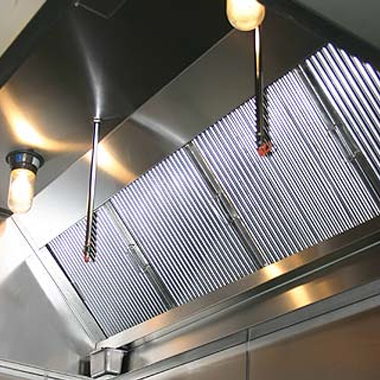

Kitchen Hood Types, Placement, and Use
Posted in Fundamentals
Kitchen hood designs vary depending on the application in which the hood is being used. There are two types of kitchen hoods.
TYPES
The first type of kitchen hoods is designed to be installed above cooking appliances that produce laden vapors, such as grease or smoke. Type 2 kitchen hoods must be installed above cooking or dis犀利士
hwashing appliances that produce heat, steam, and/or products of combustion. The purpose of type 2 hoods is to control waste heat and moisture that can burden the HVAC system and promote an unhealthy workplace. The operation of kitchen hoods is governed by the applicable code.
ACTIVATION
In general, type 1 kitchen hoods automatically activate the exhaust fan associated with the hood whenever cooking operations occur. Typically, activation of the exhaust fan is triggered by a heat sensor. Automatic operation can also be achieved through the interlocking of the fan with cooking appliances or lights, infrared technology, or light beam interference detection.
SIZE & PLACEMENT
The size of the kitchen hood is dependent upon the size of the equipment that the hood is serving. The hood needs to extend 6″ horizontally beyond the edge of the cooking appliances on all sides, and the hood cannot be more than 4 feet above the top of the cooking appliances. There are also different types of hood designs that affect the amount of exhaust air requirements for the hood.
For example, hoods that have side panels require less exhaust air than a hood without side panels. Some examples of different types of designs are: island, back-to-back, canopy with side panels, eyebrow hood, and back-shelf/pass-over. The exhaust air requirements of a hood are also dependent upon the cooking equipment that is serves.
EQUIPMENT
Cooking appliances are categorized into 4 different groups based on the amount of contaminants that they produce. Appliances that produce more grease laden vapors require a greater amount of exhaust air. Along with the type of hood and the cooking appliances that the hood serves, the exhaust air requirements are also dependent upon the length of the front face of the hood; the longer the hood, the more exhaust air that is required.
MAKE-UP AIR
Kitchen hoods must also be supplied with make-up air. The purpose of the make-up air is to travel across the front face of the hood in order to capture the contaminants and force them into the hood. Make-up air can either be delivered into the space that the hood is located or make-up air can be delivered to the hood, where the air can be routed by the hood to travel across the face of the hood to capture the contaminants.
REQUIREMENTS
Shop-built and field constructed hoods are subject to the exhaust and makeup airflow requirements according to the governing mechanical code that are described above. A factory built commercial exhaust hood that has been tested in accordance with UL710 and listed and labeled by an approved agency and installed in accordance with the manufacturer’s instructions is not required to comply with these exhaust and makeup airflow requirements. The reason the UL listed hoods are exempt is because they have demonstrated compliance with construction and design requirements.

 Previous STORY
Previous STORY